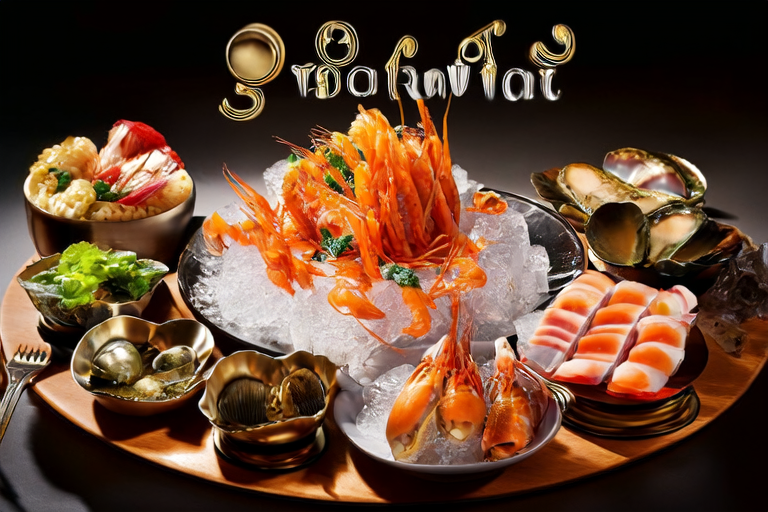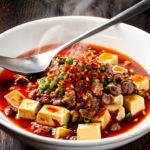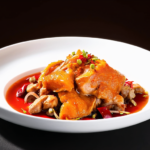- Introduction
Savoring the Sea: A Symphony of Seafood Delights
The ocean is a vast and mysterious world, teeming with life and offering an array of flavors that are both familiar and exotic. Seafood has long been a staple in many cultures, celebrated for its versatility, nutritional value, and ability to transport us to distant shores with each bite. This culinary journey through the sea will explore the intricate flavors and techniques that bring out the best in these marine delicacies. From delicate sushi to hearty stews, this symphony of seafood delights will guide you through a selection of recipes that celebrate the bounty of the sea.
In this article, we will dive into various aspects of seafood cooking, including sourcing fresh ingredients, understanding the nuances of different fish and shellfish, and mastering techniques such as grilling, poaching, and smoking. We’ll also explore how to pair seafood with complementary flavors and ingredients to create harmonious and memorable dishes. Whether you’re a seasoned chef or a home cook looking to expand your repertoire, this guide will provide you with the knowledge and inspiration to elevate your seafood game.
- Understanding Seafood
Seafood encompasses a wide range of creatures from the sea, including fish, mollusks, crustaceans, and echinoderms. Each type of seafood has unique characteristics, textures, and flavors that can be enhanced or transformed through different cooking methods. Understanding the anatomy and behavior of these creatures can help you make informed choices when selecting and preparing them.
Fish, for example, can be divided into two main categories: white-fleshed and oily. White-fleshed fish, such as cod, halibut, and snapper, have a mild flavor and a firm texture that holds up well to grilling, frying, or poaching. Oily fish, such as salmon, mackerel, and sardines, have a richer, more intense flavor and a softer texture that is ideal for smoking or pan-searing. Mollusks, including clams, oysters, and squid, offer a variety of textures, from the tender and briny to the chewy and rubbery. Crustaceans, like lobsters, crabs, and shrimp, provide a sweet and succulent meat that can be cooked in a multitude of ways.
When selecting seafood, freshness is key. Look for fish with clear eyes, bright skin, and a mild, ocean-like scent. Shellfish should have tightly closed shells, and their flesh should be plump and elastic. It’s also important to consider the sustainability of the seafood you choose. Opt for species that are harvested using environmentally friendly practices to ensure the health of our oceans for future generations.
- Cooking Techniques
There are numerous cooking techniques that can be used to prepare seafood, each bringing out different flavors and textures. Here are some of the most popular methods:
- Grilling: Grilling is a versatile technique that works well with a variety of fish and shellfish. The high heat sears the exterior of the seafood, creating a flavorful crust while keeping the interior moist and tender. To grill seafood successfully, it’s important to use a well-oiled grate and avoid overcooking, which can lead to dryness.
- Poaching: Poaching involves gently simmering seafood in a flavored liquid, such as wine, broth, or citrus juice. This method is ideal for delicate fish like sole or flounder, as it allows the natural flavors of the seafood to shine while infusing it with subtle aromas. Poaching also helps retain moisture, making it a great option for those who prefer a lighter dish.
- Smoking: Smoking imparts a rich, smoky flavor to seafood, particularly oily fish like salmon or trout. Cold-smoking, where the fish is smoked at low temperatures for several days, results in a semi-dry product that can be eaten as is or used in sandwiches and salads. Hot-smoking, on the other hand, cooks the fish at higher temperatures, producing a fully cooked and juicy result.
- Steaming: Steaming is a gentle cooking method that preserves the natural flavors and nutrients of seafood. It’s especially effective for delicate shellfish like clams and mussels, as well as for vegetables that complement seafood dishes. Steaming can be done in a bamboo steamer or a pot with a fitted lid.
Each of these techniques requires attention to detail and timing to achieve optimal results. Experiment with different methods to find your favorite way to prepare seafood.
- Recipe: Grilled Salmon with Herb Butter
This recipe showcases the robust flavor of grilled salmon paired with a fragrant herb butter. The combination of smoky char and herby richness creates a dish that is both satisfying and elegant.
Ingredients:
- 4 skin-on salmon fillets (about 6 oz each)
- 2 tbsp olive oil
- 1 lemon, cut into wedges
- Salt and pepper, to taste
- 1/2 cup unsalted butter, softened
- 2 tbsp chopped fresh parsley
- 1 tbsp chopped fresh dill
- 1 clove garlic, minced
- 1/4 tsp red pepper flakes (optional)
Instructions:
- Preheat your grill to medium-high heat. If using a charcoal grill, wait until the coals are covered with ash and glowing red.
- Rub the salmon fillets with olive oil and season generously with salt and pepper. Place the fillets, skin-side down, on the preheated grill.
- Grill the salmon for about 5 minutes per side, or until the flesh is opaque and flakes easily with a fork. Be careful not to overcook, as this can lead to dryness.
- While the salmon is cooking, prepare the herb butter. In a small bowl, mix together the softened butter, chopped parsley, dill, garlic, and red pepper flakes (if using). Taste and adjust seasoning if necessary.
- Once the salmon is cooked, remove it from the grill and place it on a serving platter. Spoon the herb butter over the top of each fillet and serve immediately with lemon wedges on the side.
Tips:
- To prevent the salmon from sticking to the grill, lightly oil the grate before placing the fish on it.
- If you don’t have a grill, you can achieve similar results by grilling the salmon on a stovetop grill pan.
- Recipe: Shrimp and Scallop Paella
Paella is a classic Spanish rice dish that originated in Valencia. This version features succulent shrimp and scallops, along with saffron-infused rice and a medley of vegetables. The dish is traditionally cooked in a large, flat-bottomed pan called a paellera, but any wide, shallow pan will do.
Ingredients:
- 2 tbsp olive oil
- 1 onion, finely chopped
- 2 cloves garlic, minced
- 1 red bell pepper, diced
- 1 zucchini, sliced
- 1 cup arborio rice
- 1 1/2 cups chicken or vegetable broth
- 1/2 tsp saffron threads
- 1 lb large shrimp, peeled and deveined
- 1 lb bay scallops
- 1 lemon, cut into wedges
- Salt and pepper, to taste
- Fresh parsley, chopped (for garnish)
Instructions:
- Heat the olive oil in a large paella pan or skillet over medium heat. Add the onion and garlic, and sauté until softened, about 5 minutes.
- Add the bell pepper and zucchini, and cook for another 5 minutes, or until the vegetables are just tender. Stir in the arborio rice and cook for 1-2 minutes, allowing the grains to absorb the flavors.
- Pour in the broth and saffron, and bring the mixture to a boil. Reduce the heat to low, cover the pan, and simmer for 15 minutes, or until the rice is almost tender and the liquid has been absorbed.
- Stir in the shrimp and scallops, and continue cooking for another 5-7 minutes, or until the seafood is cooked through and the rice is fully cooked. Season with salt and pepper to taste.
- Garnish the paella with chopped parsley and serve with lemon wedges on the side.
Tips:
- To enhance the saffron flavor, toast the saffron threads briefly in a dry pan before adding them to the broth.
- If you prefer a creamier paella, stir in a few tablespoons of heavy cream during the final stages of cooking.
- Recipe: Lobster Thermidor
Lobster Thermidor is a luxurious French dish that features lobster meat baked in a creamy sauce made with shallots, brandy, and cheese. This elegant dish is perfect for special occasions and dinner parties.
Ingredients:
- 2 live lobsters (about 1 1/2 lbs each)
- 2 tbsp butter
- 2 tbsp olive oil
- 1 shallot, finely chopped
- 1/4 cup brandy
- 1/2 cup heavy cream
- 1/4 cup grated Gruyère cheese
- 1/4 cup grated Parmesan cheese
- Salt and pepper, to taste
- 1 tbsp fresh tarragon, chopped (for garnish)
Instructions:
- Bring a large pot of salted water to a boil. Carefully place the lobsters in the boiling water and cook for 8-10 minutes, or until the shells turn bright red. Remove the lobsters from the pot and allow them to cool slightly.
- Once the lobsters are cool enough to handle, twist off the claws and tail. Crack the claws with a lobster cracker or mallet, and remove the meat. Cut the tails in half lengthwise and remove the meat from the shells.
- Melt the butter and olive oil in a large skillet over medium heat. Add the shallot and sauté until softened, about 2 minutes. Pour in the brandy and cook for another minute, allowing the alcohol to evaporate.
- Stir in the heavy cream and bring the mixture to a simmer. Reduce the heat to low and let the sauce thicken slightly, about 5 minutes.
- Add the lobster meat to the skillet and cook for 2-3 minutes, or until heated through. Stir in the grated cheeses and season with salt and pepper to taste.
- Preheat the broiler. Arrange the lobster halves on a baking sheet and spoon the creamy sauce over the top. Broil for 2-3 minutes, or until the cheese is melted and bubbly.
- Garnish with chopped tarragon and serve immediately.
Tips:
- If you prefer a milder flavor, you can substitute cognac or sherry for the brandy.
- For a vegetarian version, replace the lobster with mushrooms and use vegetable stock instead of chicken stock.
- Conclusion
Seafood offers a world of culinary possibilities, from simple preparations to elaborate feasts. By understanding the unique qualities of different types of seafood and mastering various cooking techniques, you can create dishes that are both delicious and visually stunning. Whether you’re enjoying a casual meal of grilled fish or indulging in a decadent lobster Thermidor, the flavors of the sea are sure to transport you to new culinary heights. So dive in and savor the symphony of seafood delights!


